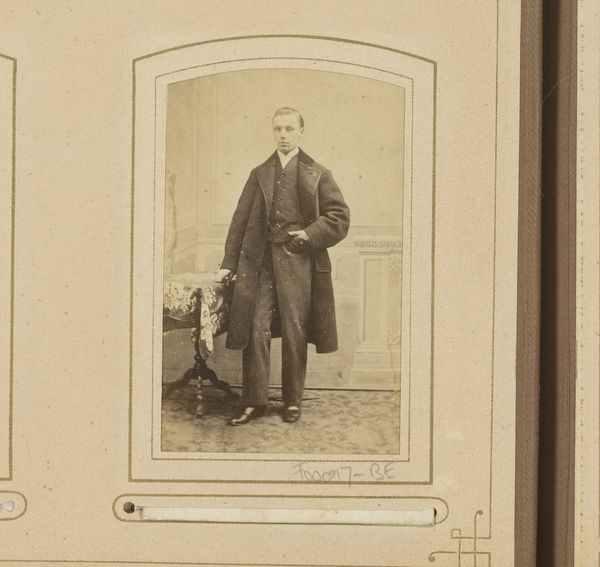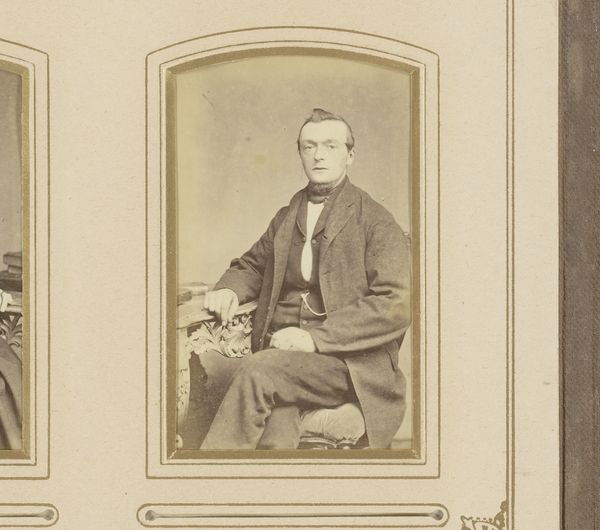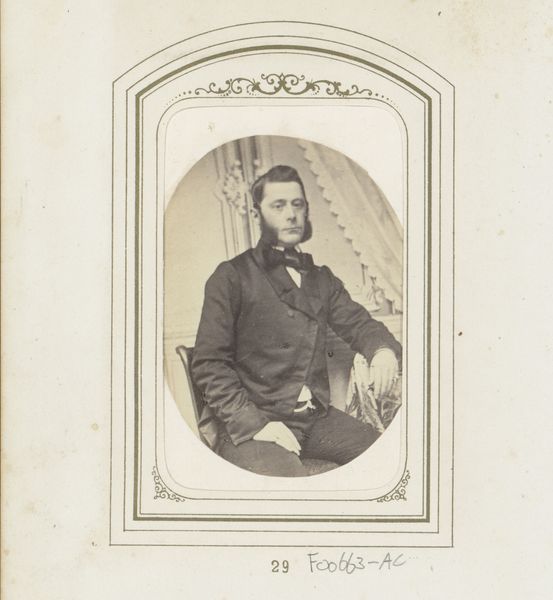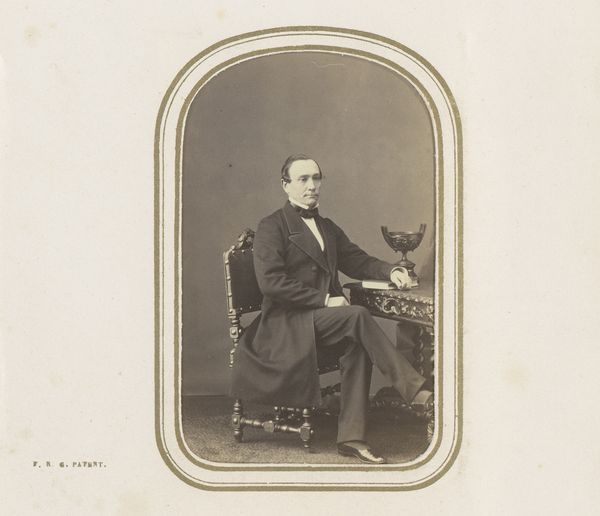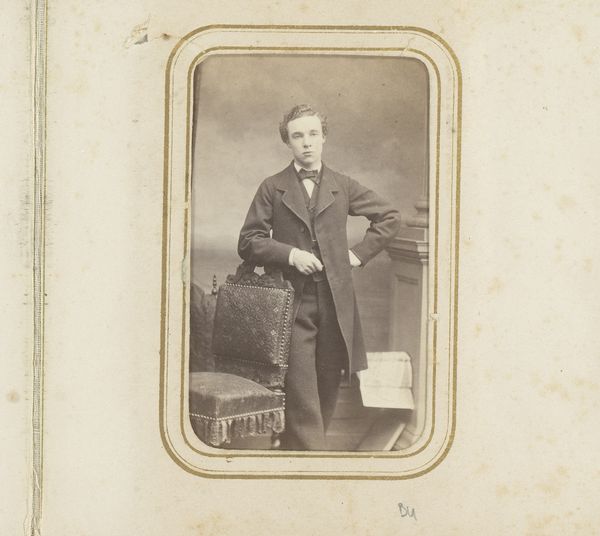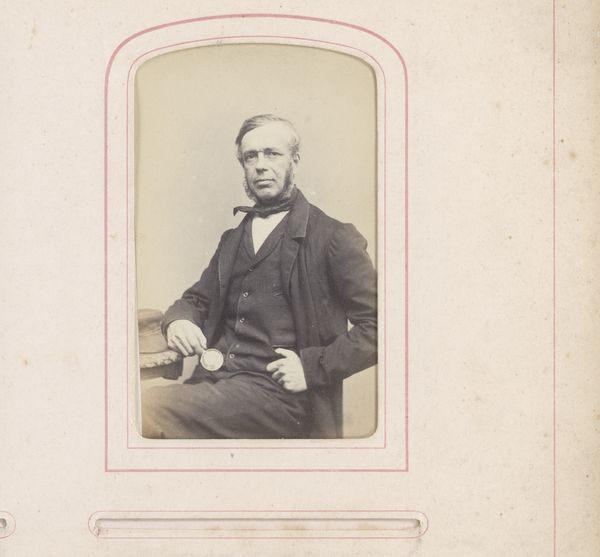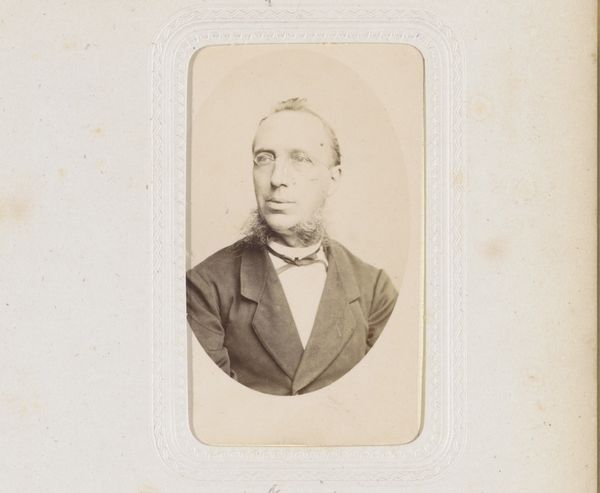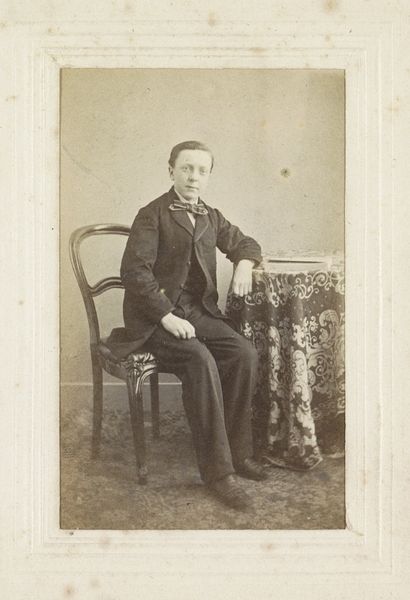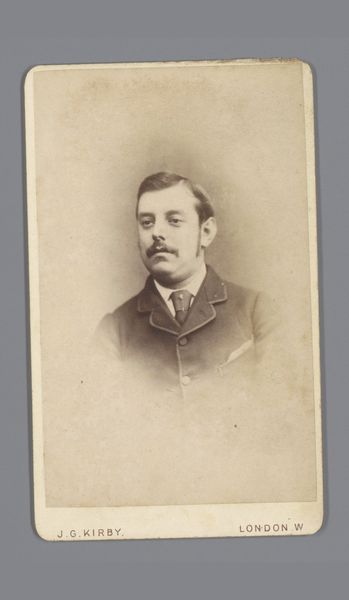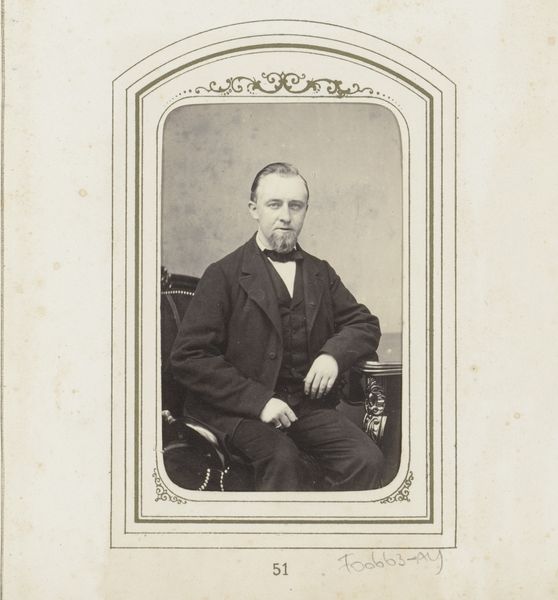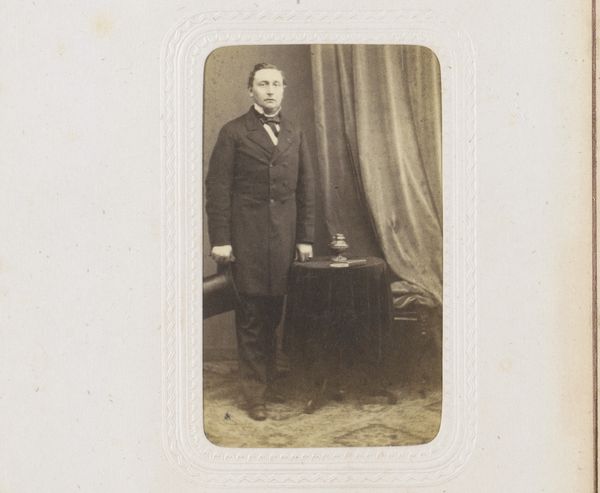
photography, gelatin-silver-print
#
portrait
#
archive photography
#
photography
#
historical photography
#
gelatin-silver-print
#
19th century
#
realism
Dimensions: height 85 mm, width 53 mm
Copyright: Rijks Museum: Open Domain
Editor: Here we have "Portret van een onbekende man," made between 1863 and 1892, a gelatin-silver print. It’s a very formal looking portrait; it gives the feeling of restrained respectability. What can you tell me about this piece? Curator: From a materialist perspective, I immediately consider the social context embedded in this object. The gelatin-silver print, a relatively accessible photographic process by this period, allowed for mass production of portraits. Think about what that meant for self-representation at that time. It wasn’t just the elite who could have their likeness captured. Editor: So, it democratized portraiture in a way? Curator: Precisely! And this man’s suit – the materiality of that fabric, likely machine-made – and the very act of him commissioning a portrait suggest his participation in a burgeoning middle class. He's signaling his aspirations through consumer choices. This photographic object becomes less about ‘art’ and more about a cultural artifact revealing societal shifts. What about the format – its presentation? Editor: Well, it seems to be part of an album page? So it could have been part of someone’s personal collection, a record of their social circle perhaps? Curator: Exactly! How does this shift your perspective? The labor involved in creating and consuming such an object speaks volumes about class, access, and evolving ideas of self. The studio, the photographer’s labor, the chemical processes... it's a whole system of production. Editor: That’s a very different way to look at a portrait! I never considered the manufacturing aspects so thoroughly. It changes the way I think about portraiture from this era. Curator: Indeed. Seeing art as material culture invites us to deconstruct conventional notions of artistic value. It becomes a window into broader social and economic processes.
Comments
No comments
Be the first to comment and join the conversation on the ultimate creative platform.
